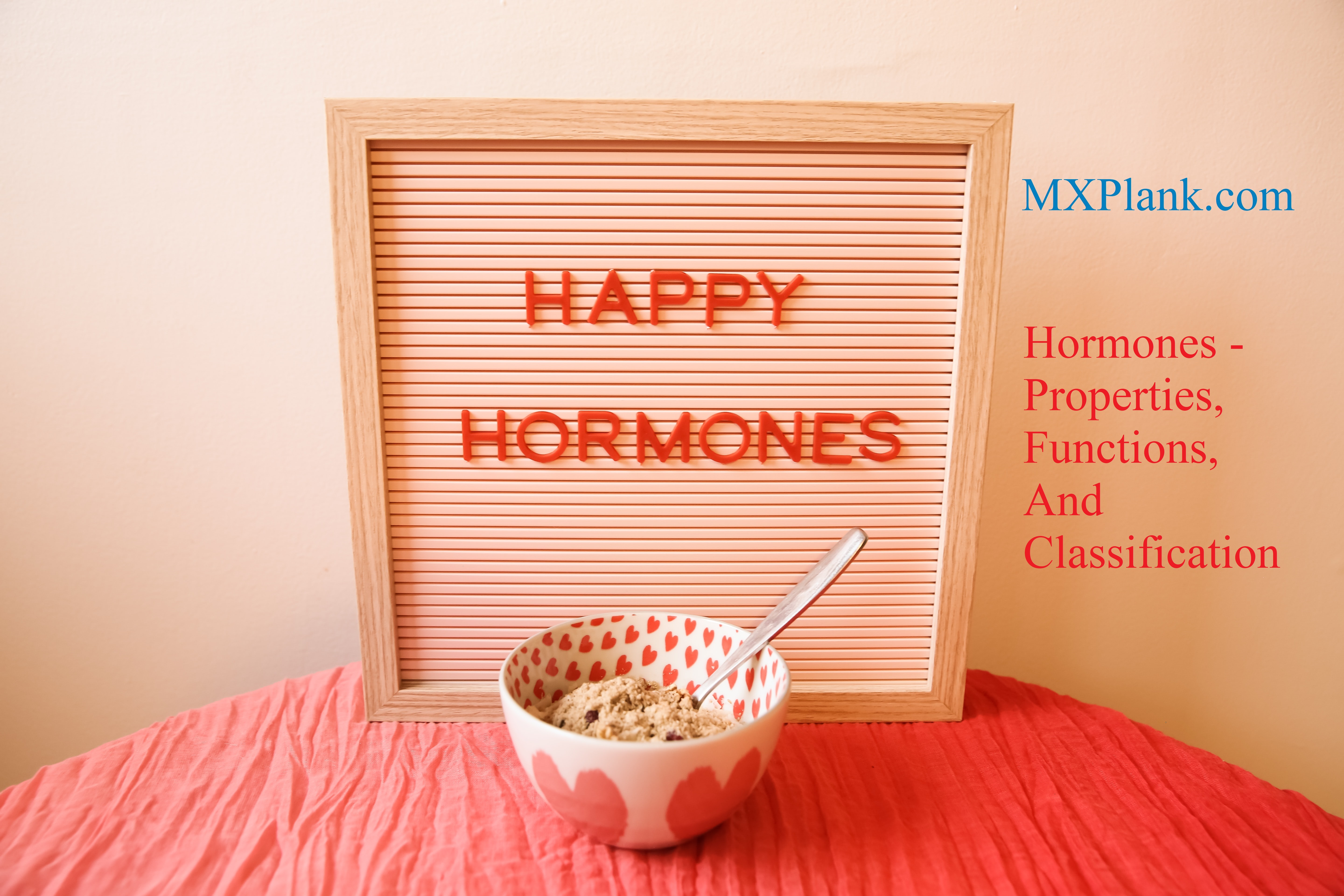Hormones- Properties, functions and classification
Hormones:
Hormones are the chemical messenger produced in
small amount by endocrine glands, secreted into blood stream to control
metabolism and biological activities in target cell or organs.
Characteristics or
properties of hormone:
Low molecular weight
Small soluble organic molecules
Rate of diffusion is very high and are readily
oxidized but the effect does not remains constant
It is effective in low concentration
Travels in blood
It has its target site different from where it
is produce and is specific to a
particular target
Hormones are non-specific for organisms and may
influences body process of other individuals
Functions of hormones
Regulatory and homeostasis functions
Maintain consistency of interior of cell
Permissive functions; movement of substance in
and out of cell
Integrative function; usually balance two system
Developmental function; helps in development of
foetus
Classification of hormone
Hormones are classified
On the basis of chemical nature
On the basis of mechanism of hormone actionGroup I hormone
Group II hormone
A. On the basis of
chemical nature:
Protein hormones: insulin, glucagon
Steroid hormone: sex hormones, glucocorticoids
Aminoacids derivatives hormones: epinephrine, nor epinephrine etc
B. On the basis of mechanism of hormone action
1. Group I hormone (lipophilic hormone):
These hormones are lipophilic in nature.
They are mostly derivatives of cholesterol.
These hormones binds to intracellular receptors
Example: Steroid hormones, Estrogen, androgen, glucocorticoids, cholcalciferol, thyroxine etc
2. Group II hormones (water soluble hormone):
These hormones binds to cell surface receptors
and stimulates the release of certain molecules (secondary messengers) to
perform biochemical functions
On the basis of secondary messengers group II hormones are of 3 types;
i. Secondary messenger is cAMP:
eg. Acetylcholine, vasopressin, cholecystokinin, gastrin, gonadotropin releasing hormone, thyrotropin releasing hormone,
Insulin, chorynoic somato mamotropin, epidermal growth factors, fibroblast growth factors, GH, prolactin
iii. Secondary messenger is cGMP:
Atrial natriuretic peptide (ANP)
Hormones- Properties, functions and classification
